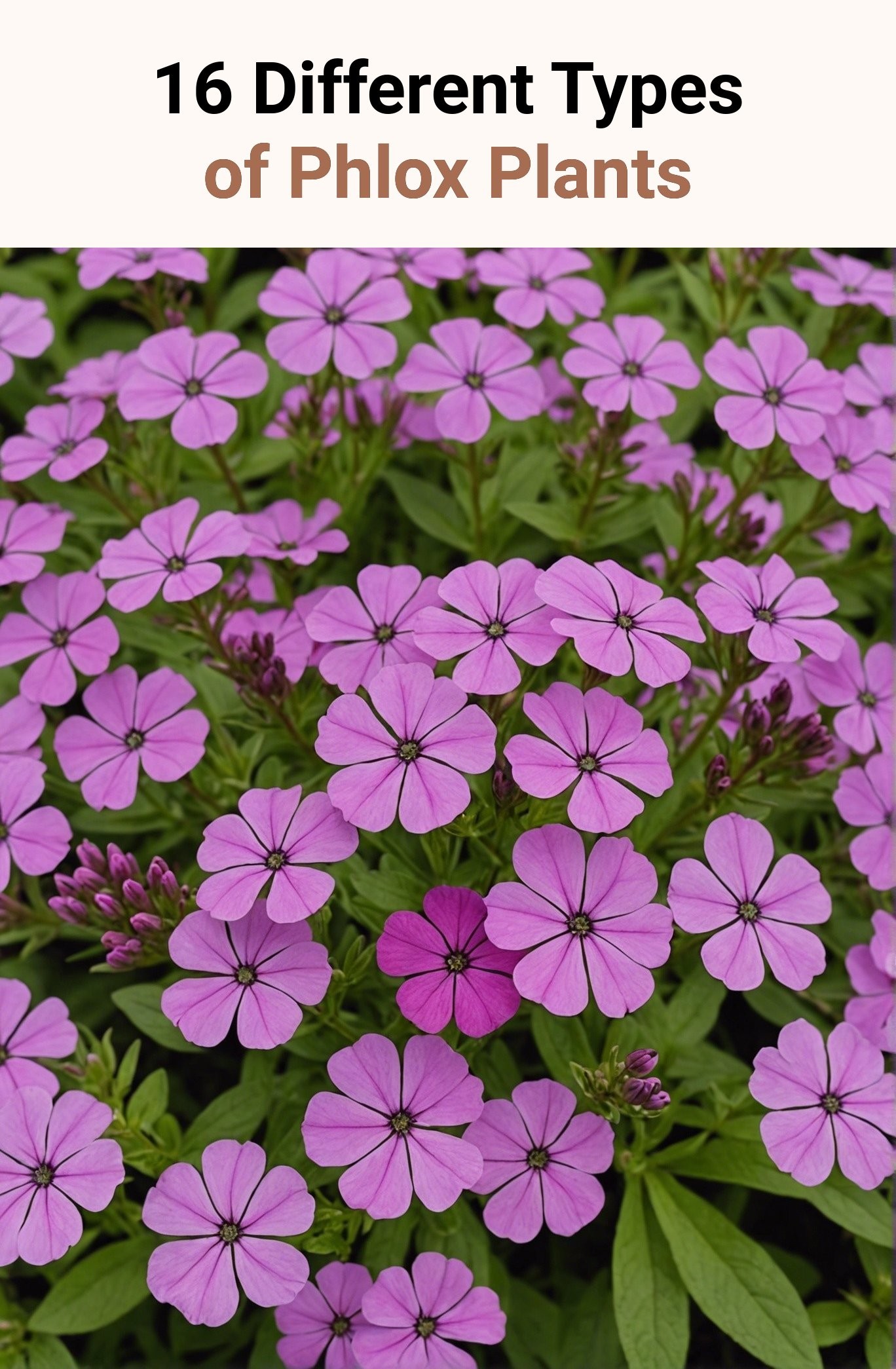Beautiful Plants For Your Interior
Beautiful Plants For Your Interior
As a gardening enthusiast, I’ve delved into the fascinating world of phlox plants. From the vibrant blooms of Garden Phlox to the delicate charm of Woodland Phlox, I’ve discovered 16 captivating varieties that will elevate any garden.
Each species offers unique colors, shapes, and fragrances, promising a mesmerizing display throughout the seasons.
Join me on this botanical journey as I showcase these exceptional plants and guide you in creating a breathtaking phlox paradise.
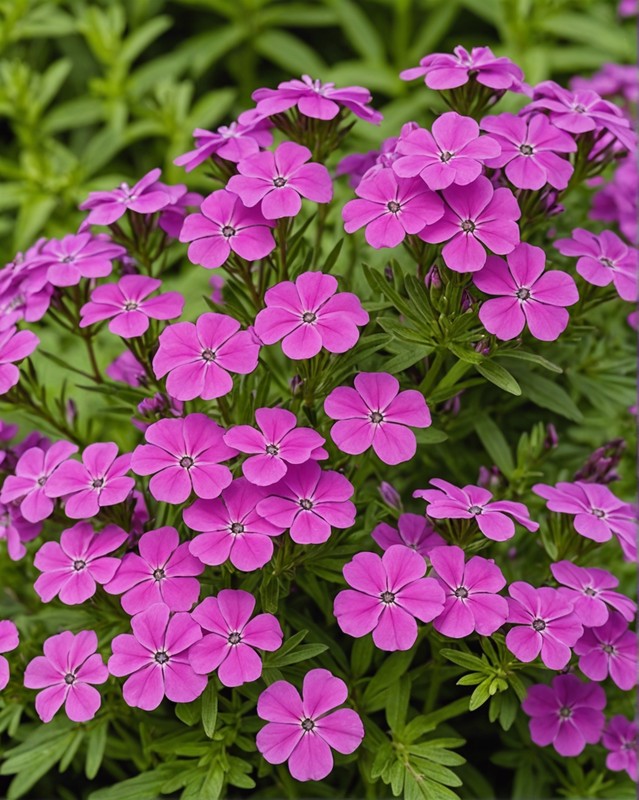
Garden phlox produces fragrant flowers that bloom profusely in a wide range of colors, offering gardeners a breathtaking sight. These flowers can be white, pink, purple, or red and bloom in flat-topped clusters atop sturdy stems.
They are excellent for attracting butterflies and hummingbirds, making them a favorite in gardens.
Garden phlox is relatively easy to grow, thriving in moist but well-drained soil and preferring a full sun to partial shade location. They are also remarkably resistant to pests and diseases, making them a low-maintenance addition to any garden.
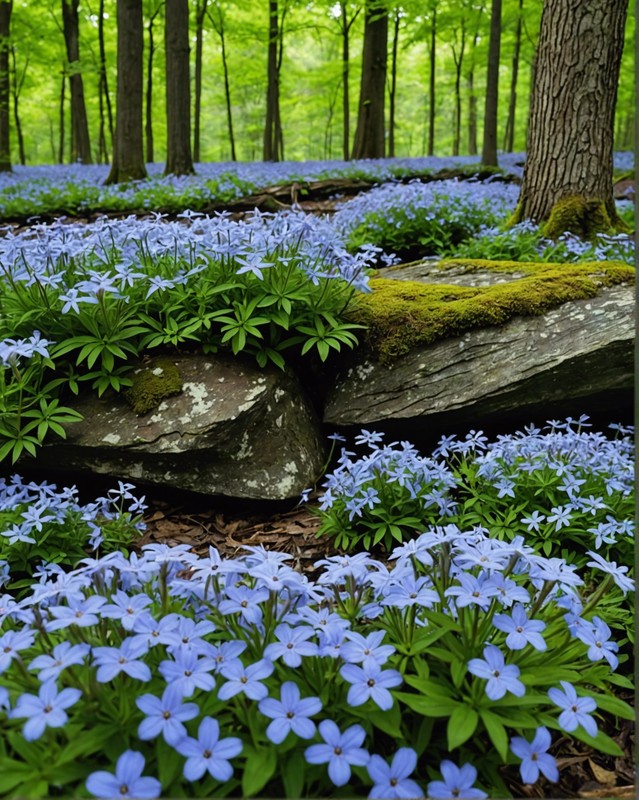
Wild blue phlox is an ethereal beauty that graces woodland edges and meadows with its vibrant blue blooms.
These flowers, resembling miniature five-pointed stars, create an eye-catching carpet in the spring.
Its delicate foliage and sprawling habit make it ideal for ground cover or cascading over rock walls.
Unlike some phlox varieties, wild blue phlox thrives in moist, well-drained soil and partial shade, making it a versatile choice for diverse gardening conditions.
Its ability to attract butterflies and hummingbirds adds another layer of charm to this enchanting wildflower.
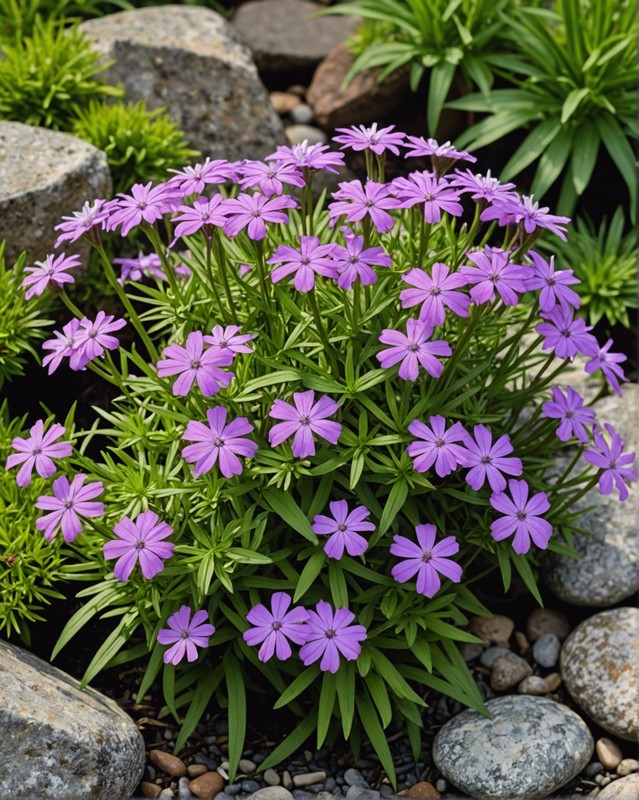
Creeping phlox is a low-growing perennial that forms a dense mat of foliage, spreading quickly to create a vibrant groundcover. Its needle-like leaves add texture and interest, while the clusters of star-shaped flowers bring cheerful pops of color in spring.
This easy-care plant thrives in full sun to partial shade and well-drained soil, making it a versatile choice for gardens and landscapes.
Its compact habit and showy blooms make creeping phlox a popular rock garden or border plant, adding a touch of charm and beauty wherever it goes.
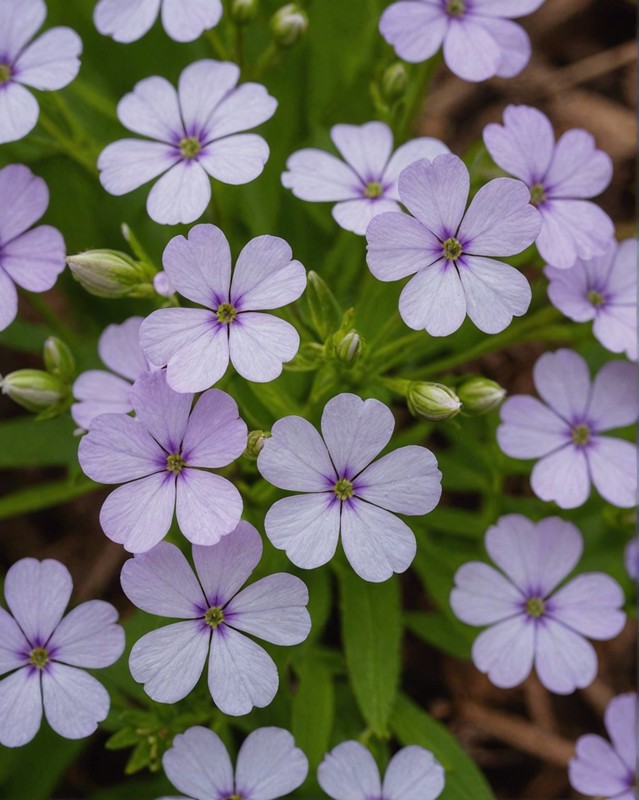
Woodland phlox is a beautiful and easy-to-grow wildflower native to North America.
With its showy clusters of fragrant lavender to white flowers that bloom in the spring, it’s a great choice for adding a touch of color to woodland gardens or shady areas.
Woodland phlox prefers moist, well-drained soil rich in organic matter.
It spreads readily by rhizomes, forming attractive ground covers.
Keep the soil moist during the growing season and provide some protection from harsh sunlight.
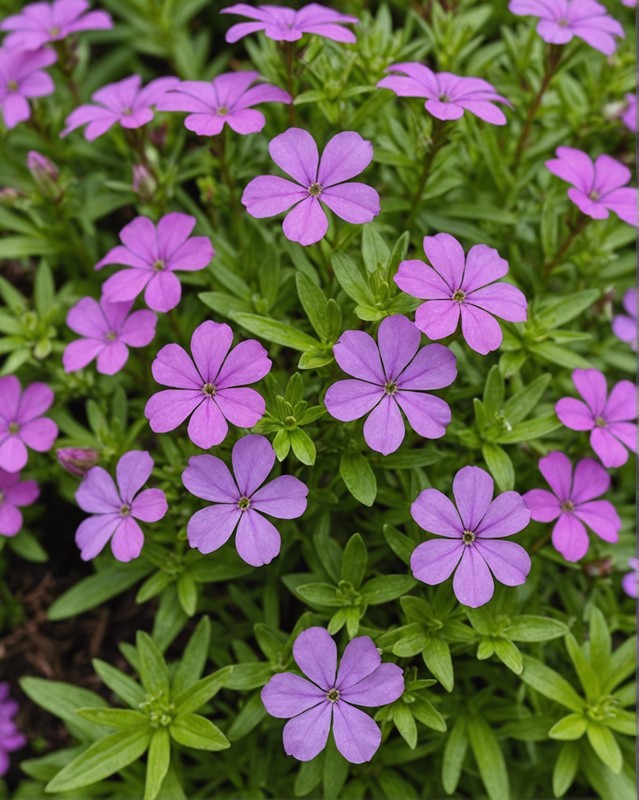
Moss phlox is a low-growing, creeping plant that forms a dense mat of foliage.
It’s a popular choice for groundcover, as it’s easy to care for and tolerates a wide range of conditions.
Moss phlox blooms in the spring, producing masses of small, star-shaped flowers in a variety of colors, including pink, white, blue, and purple.
It’s a relatively low-maintenance plant that requires little more than occasional watering and fertilizing.
Moss phlox is also deer-resistant, making it a good choice for areas where deer are a problem.
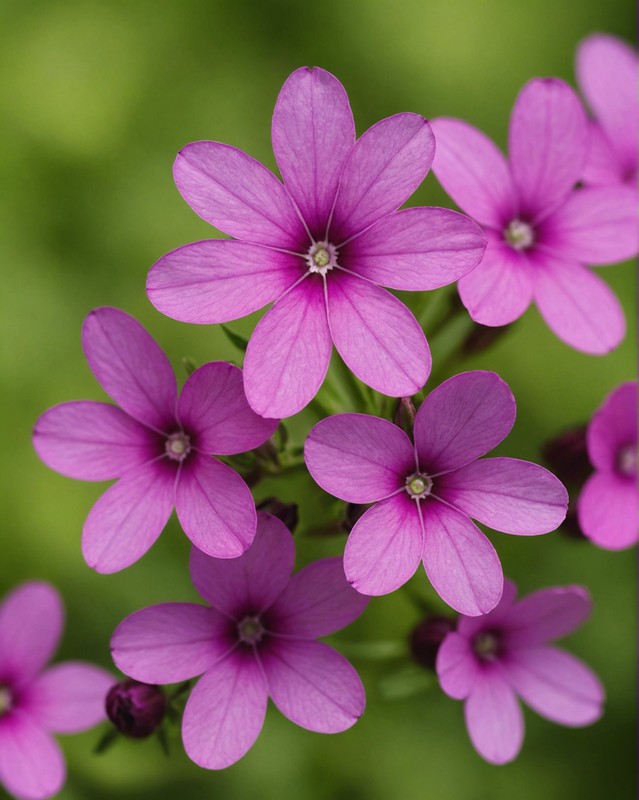
Drummond’s phlox is an annual flower that blooms in a wide range of colors, including pink, red, white, and purple.
It is a popular choice for gardeners because it is easy to grow and it attracts butterflies.
Drummond’s phlox grows best in full sun and well-drained soil.
It should be watered regularly, but it does not need to be fertilized.
Drummond’s phlox is a relatively short-lived plant, but it will self-seed and come back year after year.
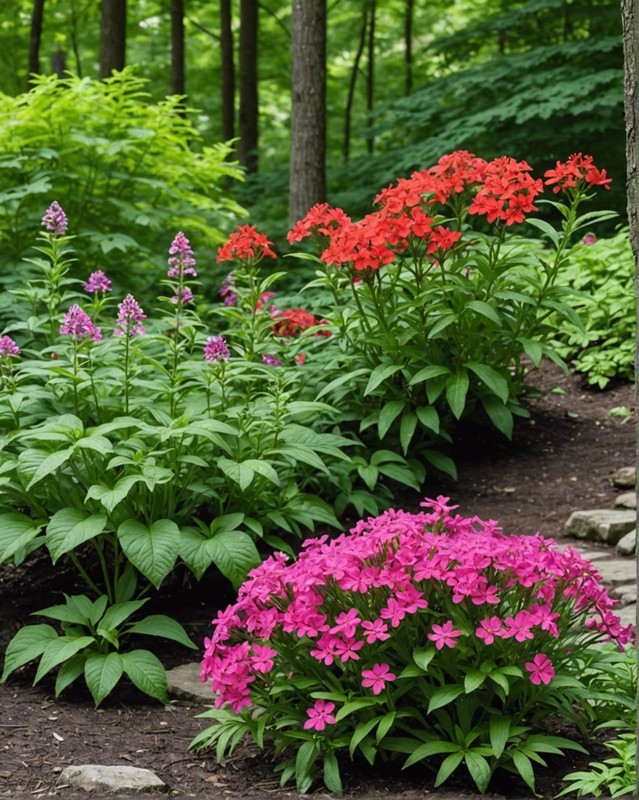
Flame phlox bursts onto the scene in late summer, attracting pollinators from far and wide. Its vibrant scarlet blooms light up shady gardens, bringing a touch of fiery color to the landscape.
Unlike many phlox varieties, flame phlox thrives in moist, woodland-style areas, making it an excellent choice for damp spots in your yard.
Growing to about 2-3 feet tall, flame phlox forms dense clumps that spread slowly, providing long-lasting beauty and a lush, textural presence. Its foliage remains attractive throughout the season, adding interest even when the blooms have faded.
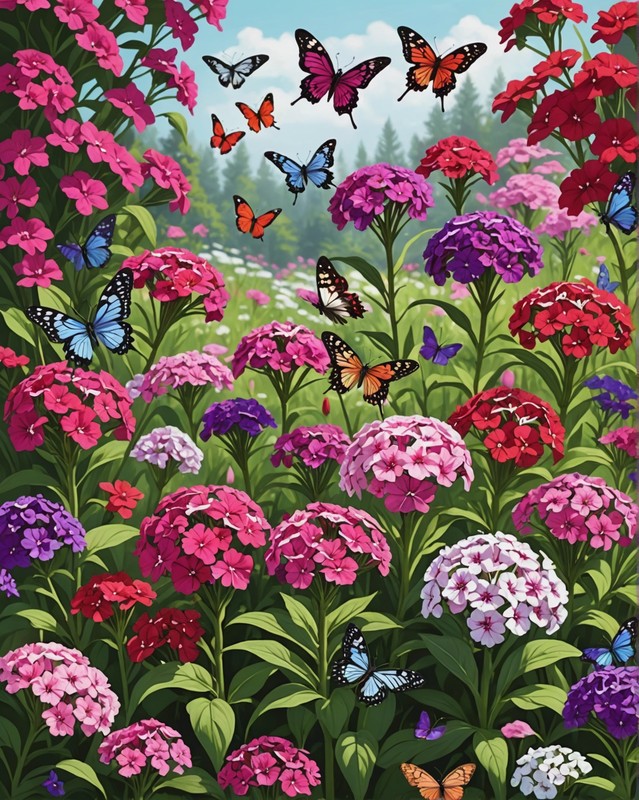
Sweet William is a charming biennial or short-lived perennial known for its vivid colors and delightful fragrance. Its clusters of small, compact blooms appear in shades of pink, purple, red, and white.
Sweet William thrives in well-drained soil and full to partial sun, making it a versatile addition to any garden.
As a cut flower, its blooms bring a touch of elegance to bouquets and arrangements, where they can last up to two weeks. Plus, they attract butterflies and hummingbirds, adding a touch of magic to your outdoor space.
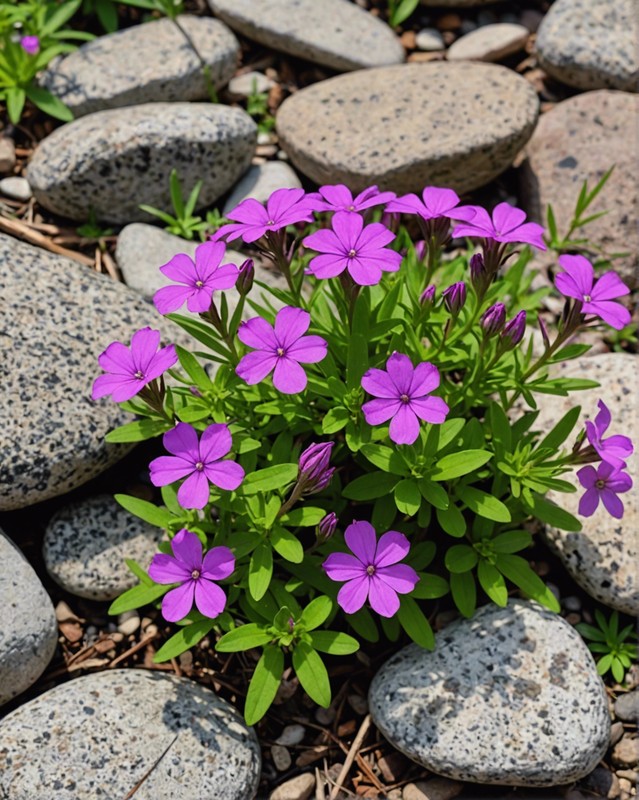
Phlox adsurgens, Mountain Phlox is a gorgeous native wildflower found in the mountainous regions of North America.
The plant typically blooms in late spring through early summer and prefers moist, rocky habitats.
Its unique look includes bright pink to purple flowers with five petals.
Mountain Phlox is a low-growing, mat-forming perennial, making it ideal as a groundcover or for rock gardens.
It’s a relatively easy plant to grow, requiring well-draining soil, partial to full sun, and regular watering.
If you’re looking for a splash of color in your garden, Mountain Phlox is a great choice that will attract pollinators and add beauty to your landscape.
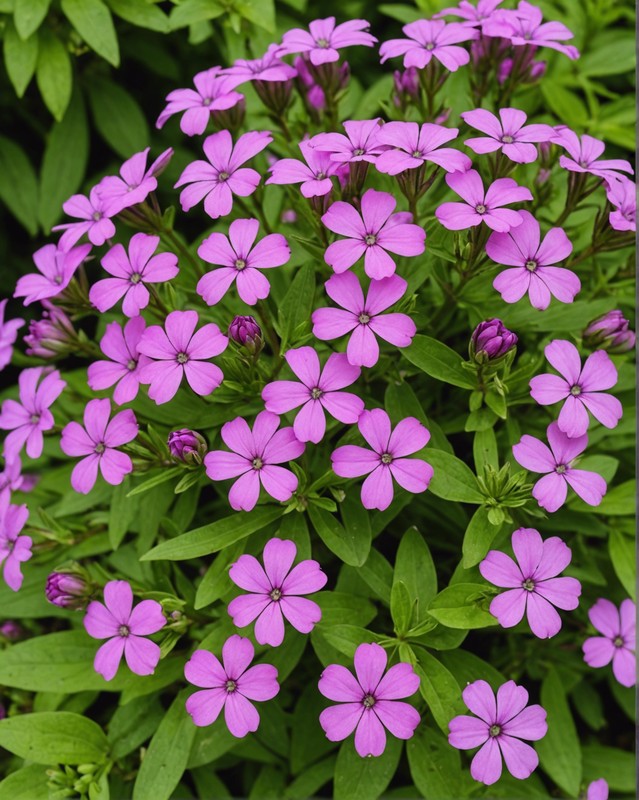
Showy Phlox, also known as Phlox speciosa, is a native wildflower that adds a touch of color to gardens. These perennials produce clusters of fragrant flowers in shades of pink, purple, or white, blooming in late spring to early summer.
Showy Phlox thrives in full sun or partial shade, making it a versatile addition to various garden settings.
Its showy blooms and ease of care make it a popular choice for both novice and experienced gardeners alike.
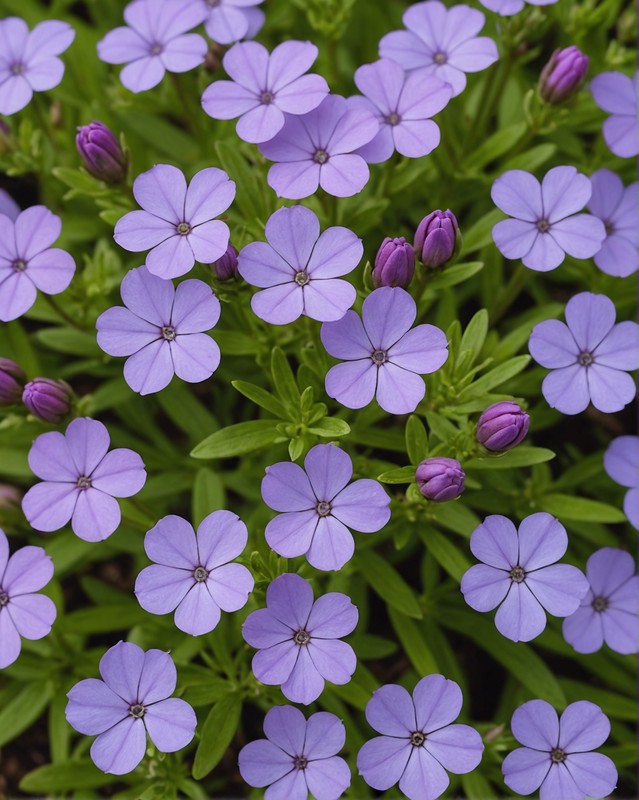
The Smooth Phlox, known scientifically as Phlox glaberrima, is an exceptional plant renowned for its delicate blooms. This low-growing perennial boasts fragrant, star-shaped flowers in varying shades of blue, pink, or white.
It prefers moist, well-drained soil and thrives in partial to full sun.
Smooth Phlox adds a charming touch to gardens, attracting butterflies and other pollinators with its sweet scent. Its compact size and easy-care nature make it an ideal choice for borders, rock gardens, or groundcovers.
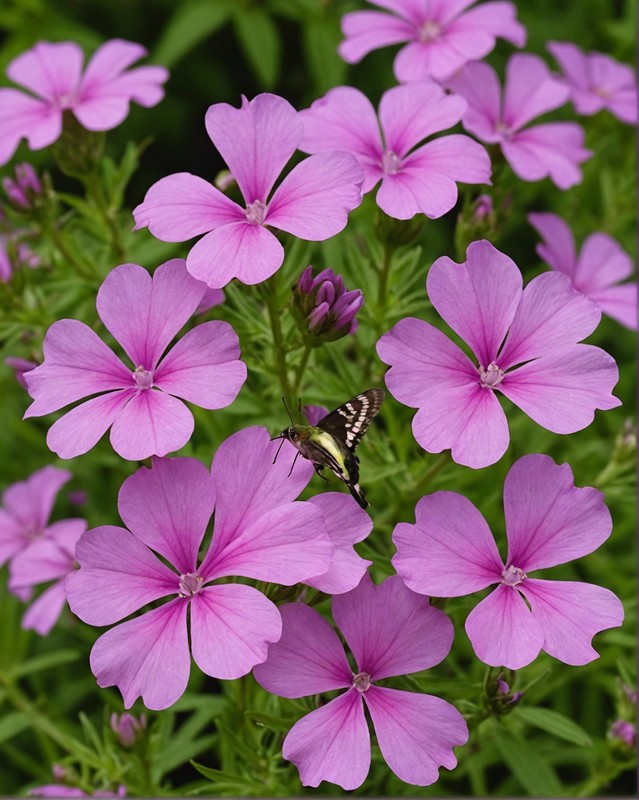
Prickly Phlox adds texture to any garden with its needle-like leaves and delicate blooms. Its lavender or pink petals form dense clusters that bloom in spring to early summer.
Hardy to zones 3 to 8, this low-growing perennial tolerates various soil types but prefers well-drained spots.
Pruning after flowering encourages more blooms and keeps the plant compact. Prickly Phlox attracts butterflies and hummingbirds, making it a charming and beneficial addition to any landscape.
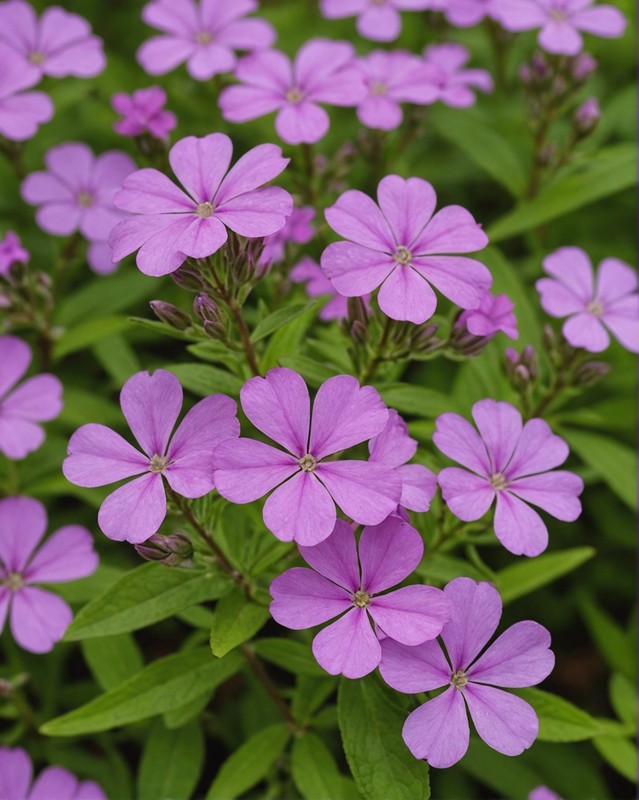
Carolina Phlox is known for its graceful blooms that add a vibrant touch to gardens.
This native North American plant thrives in a variety of soil conditions, making it easy to care for.
With its compact growth habit and showy flowers, this phlox variety is a popular choice for borders, rock gardens, and cottage gardens.
Its unique lavender-pink petals create a breathtaking display, attracting butterflies and other pollinators.
Whether you’re a seasoned gardener or just starting out, Carolina Phlox is an ideal choice for adding beauty and attracting wildlife to your outdoor space.
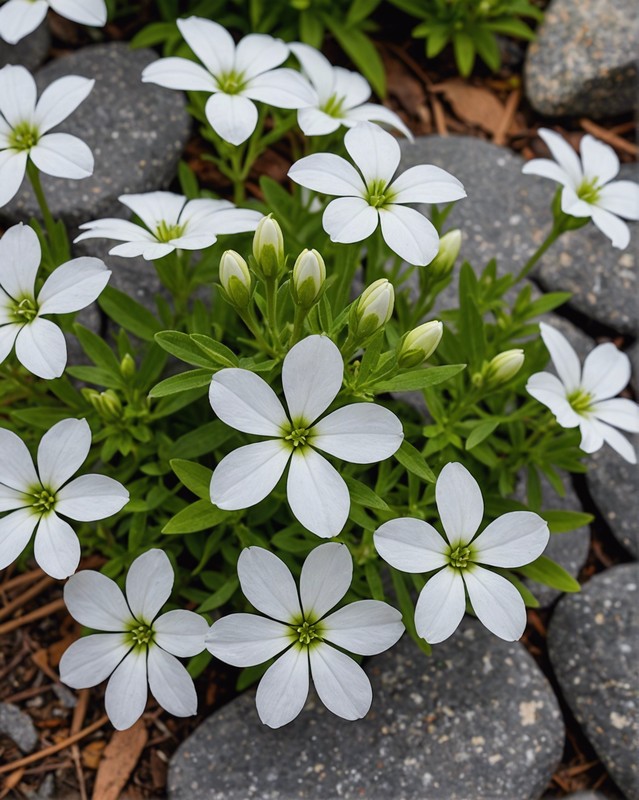
Cleft Phlox is not the typical garden fare, so if you’re looking for something a bit more unusual, this is it.
Its pure white flowers are divided deeply into three narrow segments that flare slightly at the ends, giving the flower a distinctive star-shaped appearance.
It blooms mid to late spring and has narrow, gray-green foliage.
Phlox bifida is virtually carefree and is an excellent choice for rock gardens or along the edges of pathways.
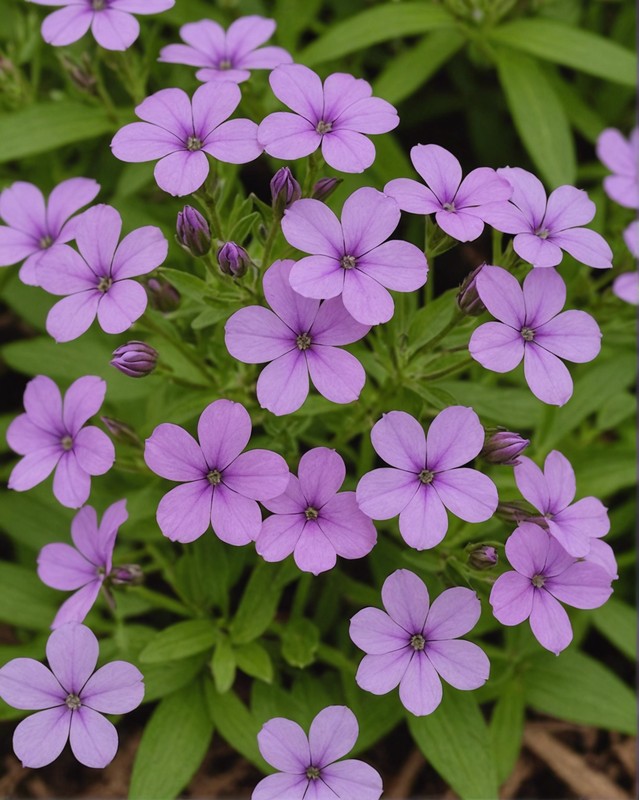
Downy phlox is a lovely groundcover that adds a touch of color to your garden from late spring to early summer.
With its soft, silky hairs on both the stems and leaves, downy phlox has a unique and gentle appearance.
The small, star-shaped flowers come in various shades of pink, purple, and blue, creating a cheerful and vibrant display.
This is a low-maintenance plant that can naturalize easily, making it a great choice for a wildflower garden or a low-growing border.
Its adaptability to various soil types and sun exposure makes it a versatile plant for any gardener.
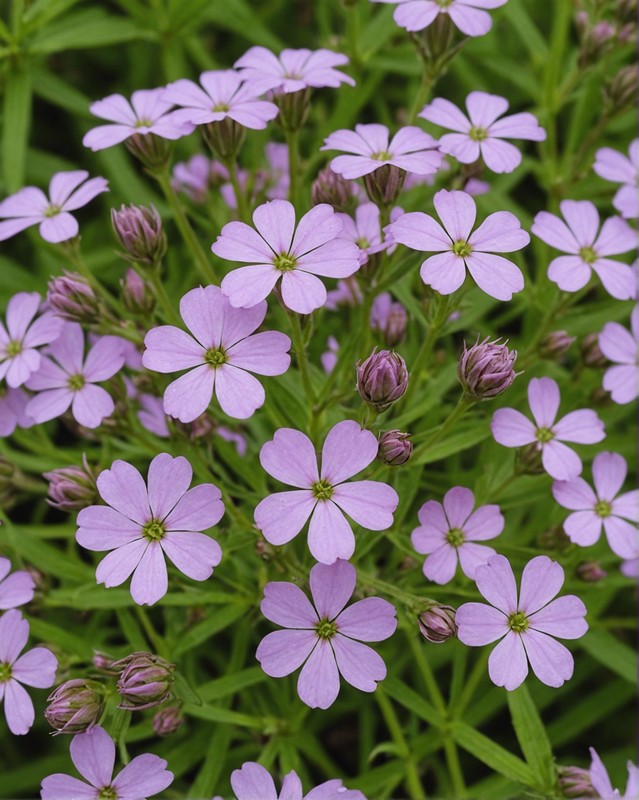
Among the diverse phlox varieties, the Hairy Phlox (Phlox pilosa) stands out with its unique appearance.
This native North American wildflower features hairy stems and leaves, giving it a distinct texture.
Its flowers bloom in a vibrant shade of pale lavender-pink, forming delicate clusters that add a touch of charm to gardens.
The Hairy Phlox is a perennial plant, returning year after year with its captivating beauty.
Its hardiness and adaptability make it a popular choice for both novice and experienced gardeners.
